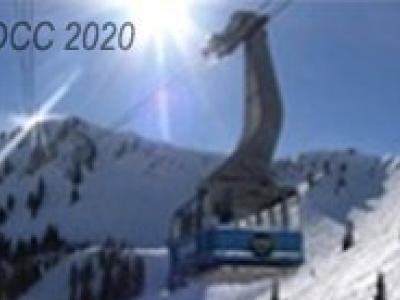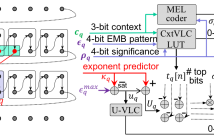
- Read more about Video-based compression for plenoptic point clouds
- Log in to post comments
DCC_poster.pdf
- Categories:
 22 Views
22 Views
- Read more about Gaussian Guided Inter Prediction for Focal Stack Images Compression
- Log in to post comments
- Categories:
 45 Views
45 Views
- Read more about A Rate Control Scheme for HEVC Intra Coding Using Convolution Neural Network (CNN)
- Log in to post comments
High-Efficiency Video Coding (HEVC) is the latest video coding standard which is developed by the Joint Collaborative Team on Video Coding (JCT-VC). To guarantee successful transmission and to make the best use of available network resources, an effective rate control mechanism plays a critical role in video coding standards. The coding performance can be maximised through the appropriate allocation of bits under the constraints of a total bit rate budget and the buffer size.
- Categories:
 161 Views
161 Views
- Categories:
 19 Views
19 Views
- Read more about GOP Level Quality Dependency Based Frame Level Rate Control Algorithm
- Log in to post comments
This paper proposes a rate control algorithm based on group of pictures (GOP) level quality dependency for high efficiency video coding (HEVC) low delay hierarchical coding structure. Firstly, this paper builds a GOP level quality dependency model. Secondly, a GOP level quality dependency model based GOP level rate-distortion optimization is introduced to make bit allocation more reasonable.
- Categories:
 55 Views
55 Views
Inserting a logo into HEVC video streams is highly demanded in video applications. In this paper, we present an efficient logo insertion method for video coding in HEVC. To reduce the impact of inserted logo, the proposed method mitigates the encoding dependence on logo by partitioning the video frame into separated regions. For lossless coding region, we reduce the bit rate overhead of lossless coding according to an error propagation model. For information reusing region, we partly re-encode the quality-loss area to maintain the encoding quality.
Oral.pptx
- Categories:
 21 Views
21 Views
- Read more about LEVERAGING THE DISCRETE COSINE BASIS FOR BETTER MOTION MODELLING IN HIGHLY TEXTURED VIDEO SEQUENCES
- Log in to post comments
Motion modelling plays a central role in video compression. This role is even more critical in highly textured video sequences, whereby a small error can produce large residuals that are costly to compress. While the translational motion model employed by existing coding standards, such as HEVC, is sufficient in most cases, using higher order models is beneficial; for this reason, the upcoming video coding standard, VVC, employs a 4-parameter affine model.
- Categories:
 38 Views
38 Views
- Read more about Enhanced Video Compression based on Effective Bit depth Adaptation
- Log in to post comments
- Categories:
 30 Views
30 Views
- Read more about HIGH THROUGHPUT BLOCK CODING IN THE HTJ2K COMPRESSION STANDARD
- 1 comment
- Log in to post comments
This paper describes the block coding algorithm that underpins the new High Throughput JPEG 2000 (HTJ2K) standard. The objective of HTJ2K is to overcome the computational complexity of the original block coding algorithm, by providing a drop-in replacement that preserves as much of the JPEG 2000 feature set as possible, while allowing reversible transcoding to/from the original format. We show how the new standard achieves these goals, with high coding efficiency, and extremely high throughput in software.
- Categories:
 52 Views
52 Views
- Read more about Blocksize-QP dependent intra interpolation filters
- Log in to post comments
Intra interpolation filters for intra angular prediction play an important role in the coding performance. In the intra angular prediction of VVC, which is being standardized by the joint video coding expert team (JVET), block-size based switchable interpolation filters between 4-tap cubic and Gaussian interpolation filters is being studied. Although the two filters have different frequency characteristics, block size-based criteria are insufficient to represent the reference sample characteristics.
- Categories:
 14 Views
14 Views